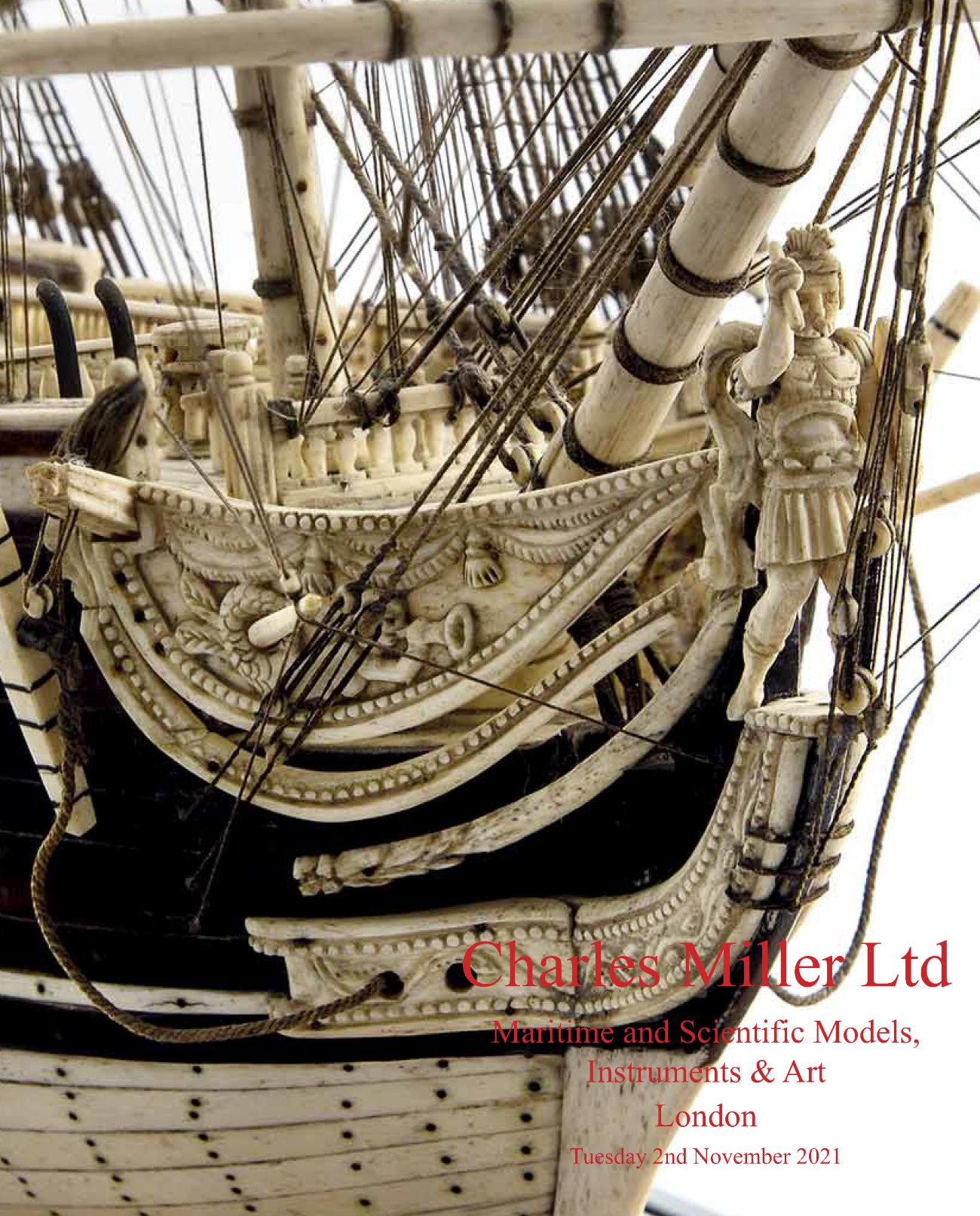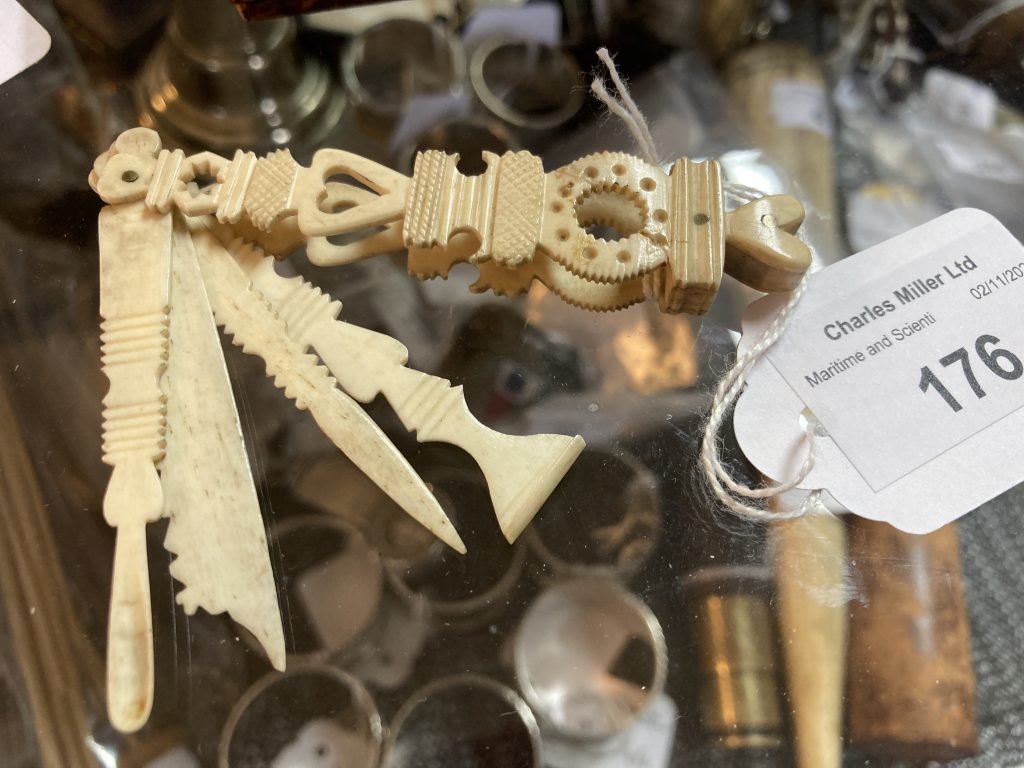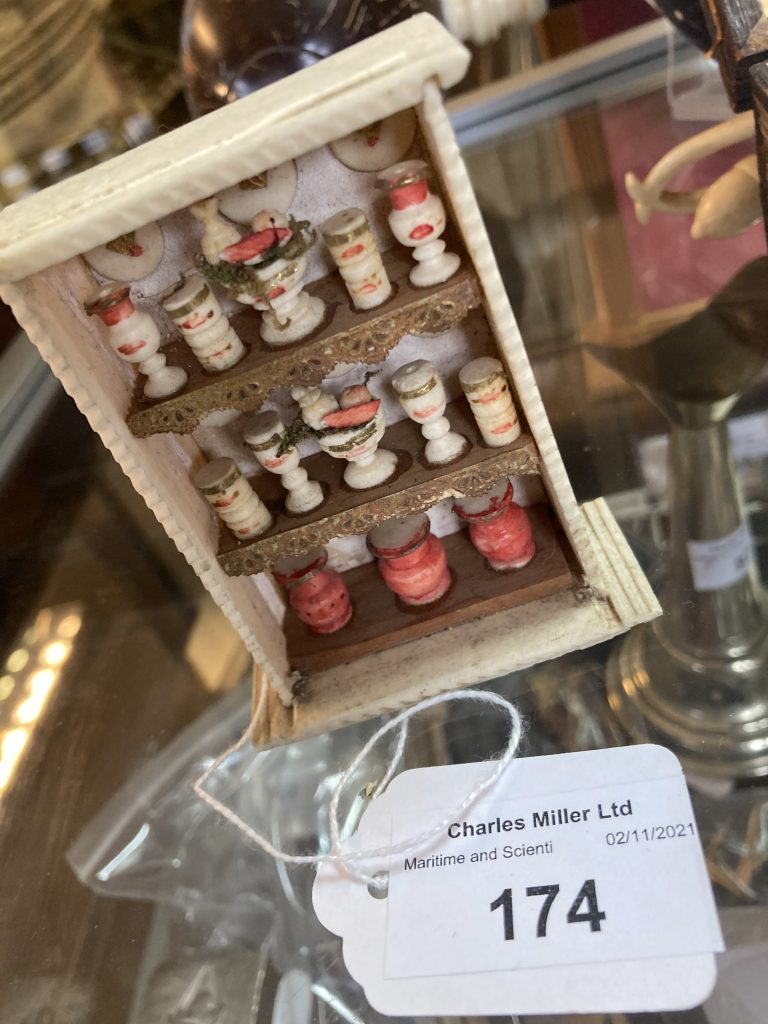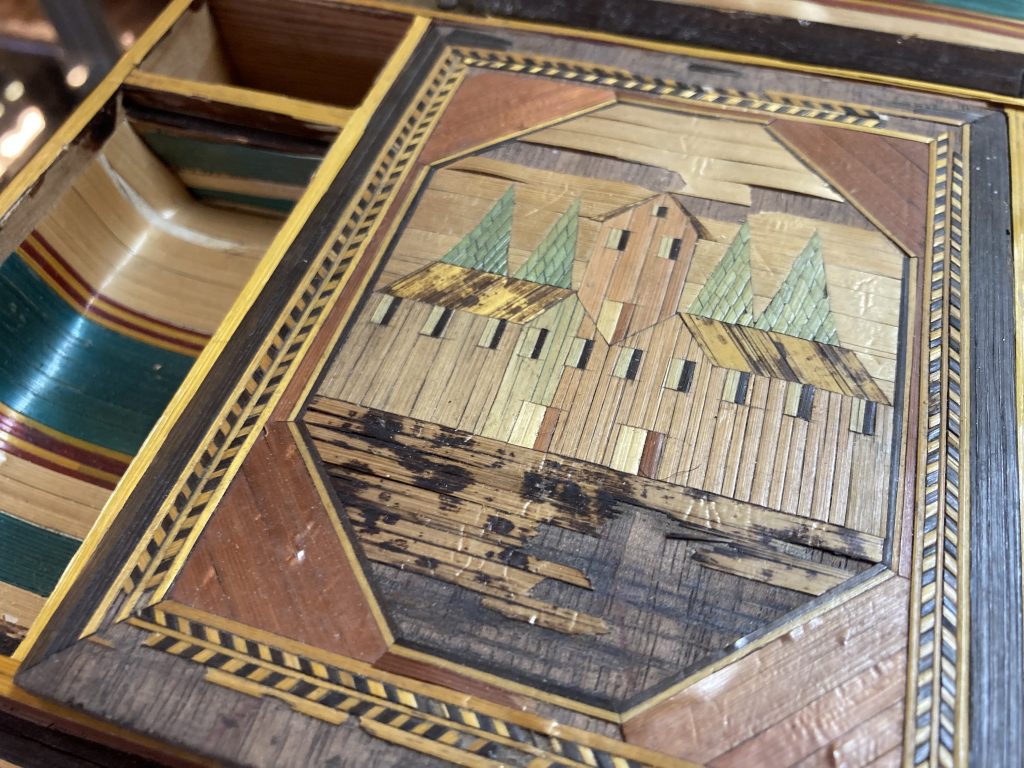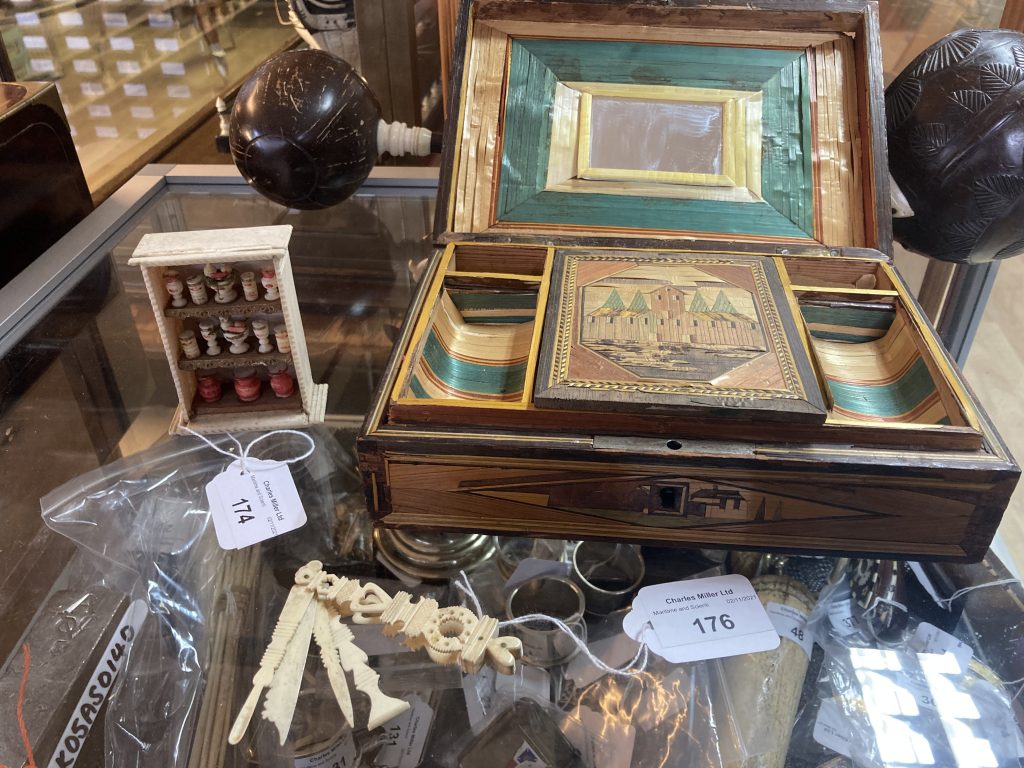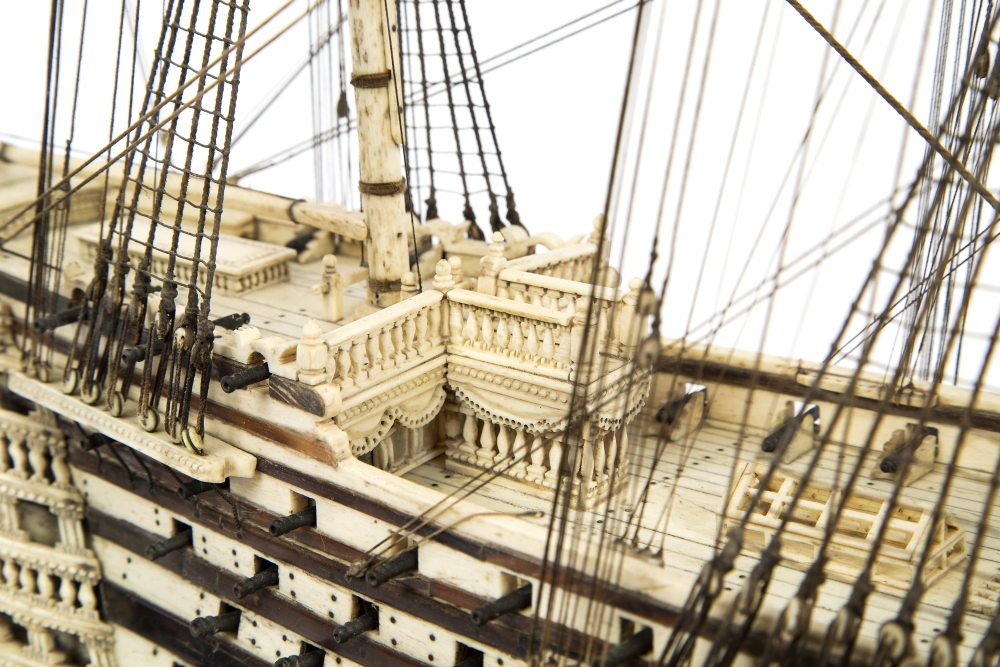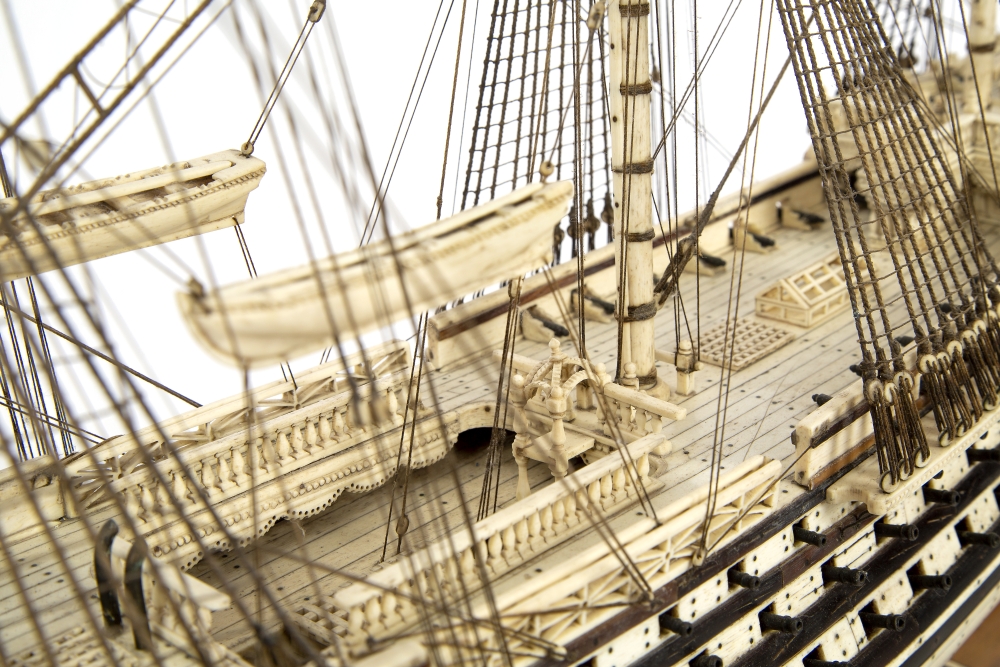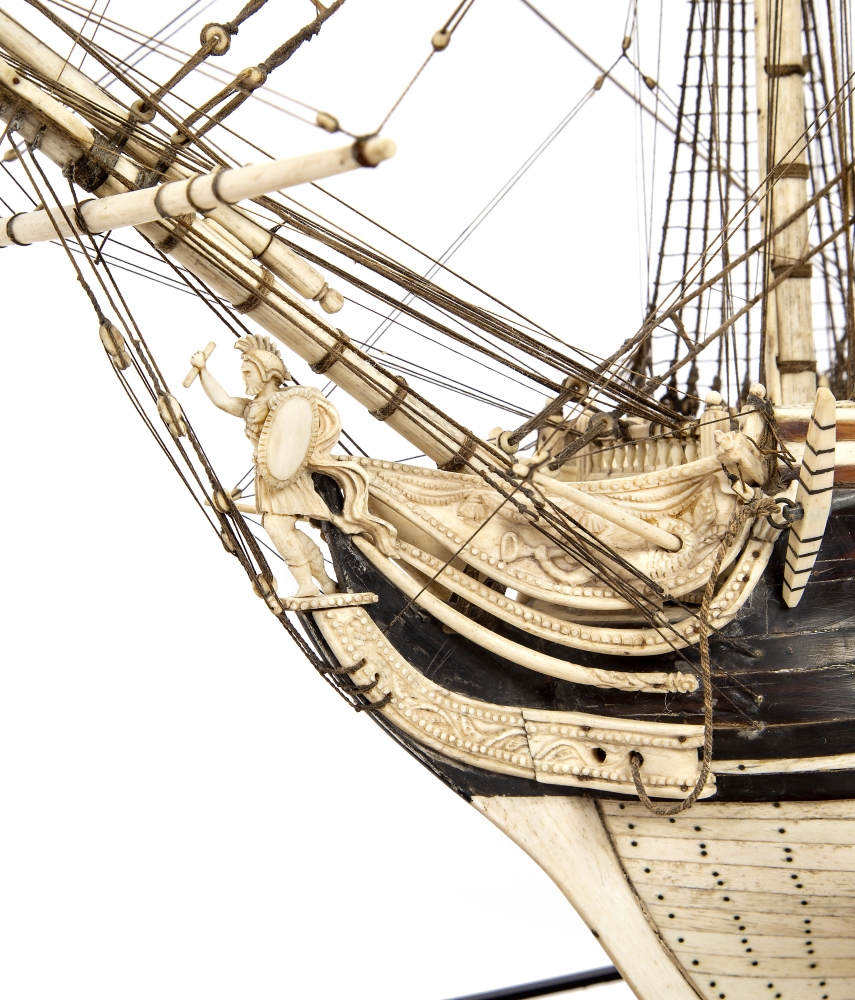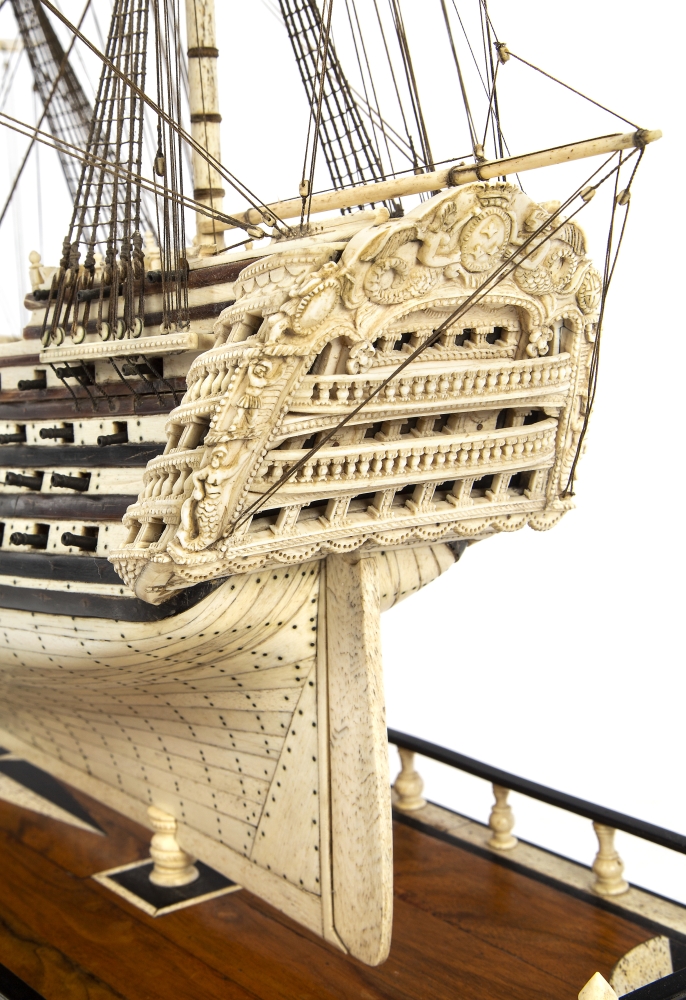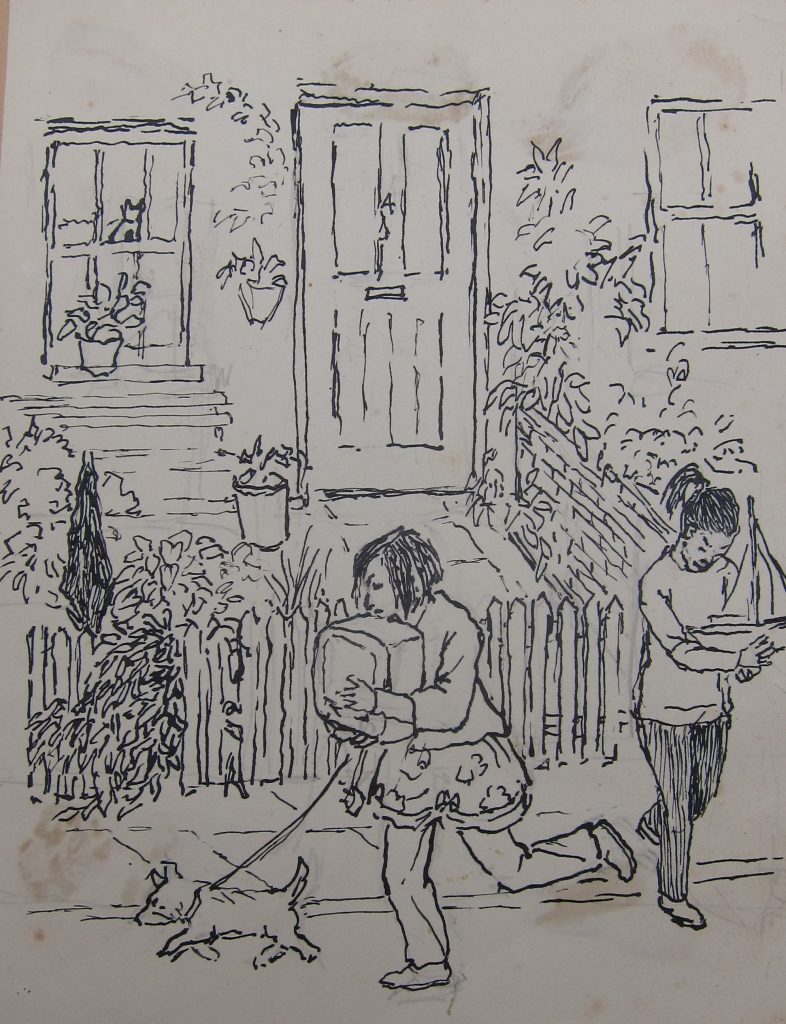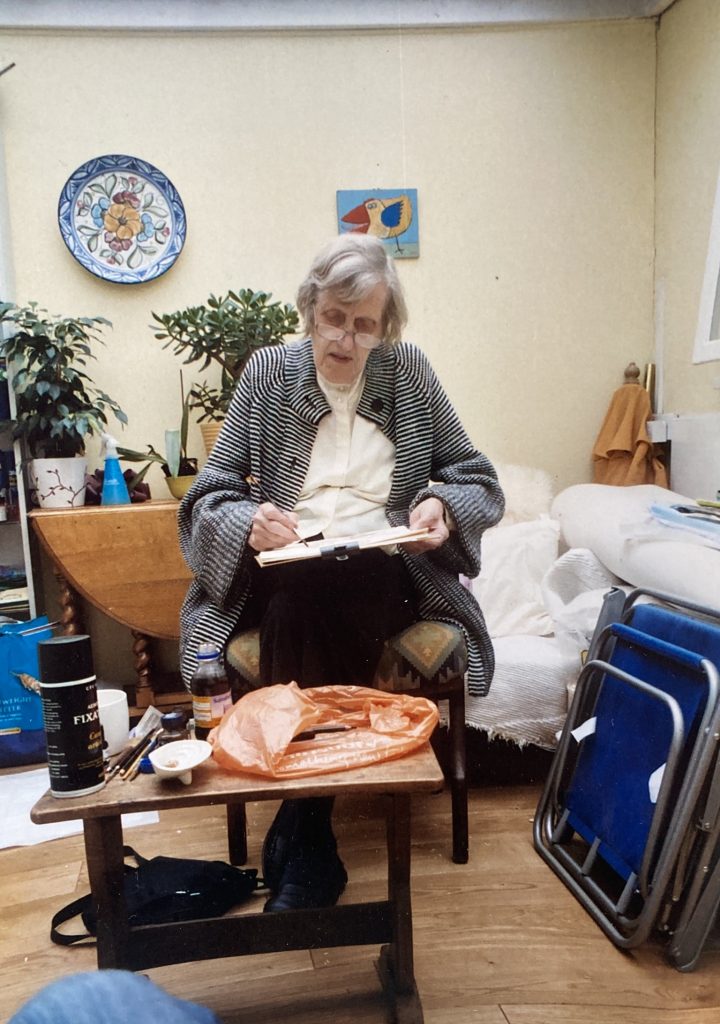Recently I found myself with my aunt and Charles Miller at his offices; viewing some of the weird, wonderful and striking items that are coming up in his next sale on 2nd November 2021 (starting at 10am).
As we looked around, a beautiful ghostly white ship model caused us to stop in our tracks. Struck by the sheer detail and workmanship. Even I, with untrained eyes, could see that this was an exceptional piece.
I asked Charles where it had come from, and the story that followed was both fascinating and enlightening as Charles brought history to life through his vivid descriptions.
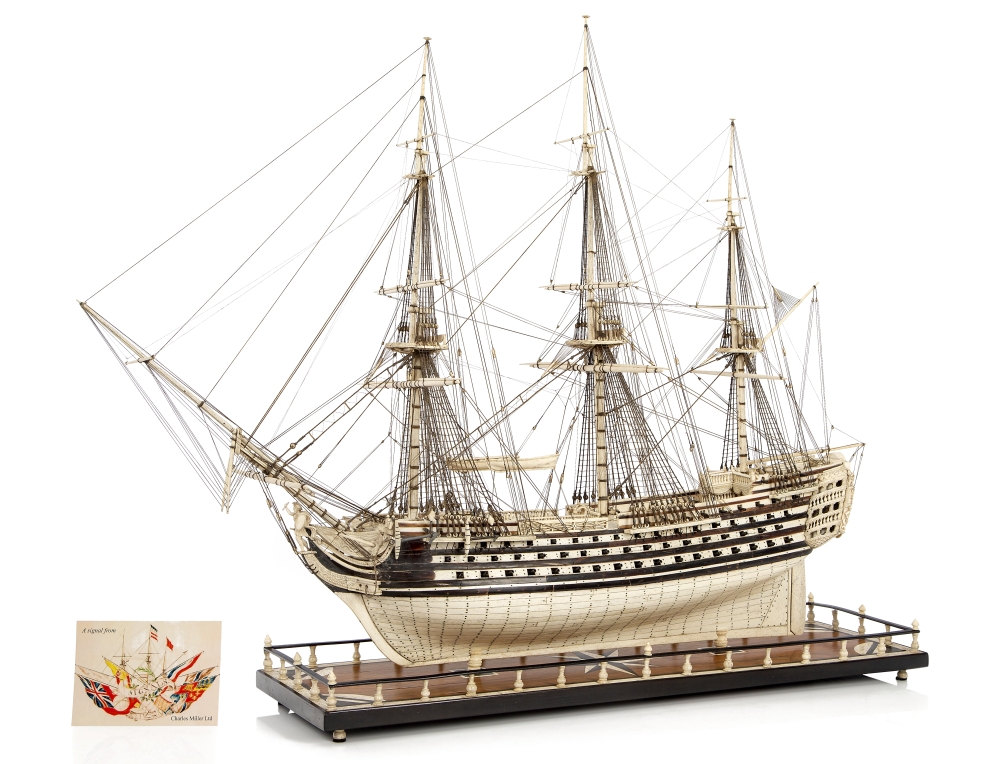
“This ship would have been made from English beef bone by a French prisoner of war in an English prison sometime between 1793 and 1815 during the Napoleonic War … (in 1803 the peace treaty of Amiens meant that both sides took a few months off war – the English repatriated some French prisoners on Bond so that they would be returned if we ever went back to War, which we did)
During this time, England incarcerated 150,000 French sailors and imprisoned them – The principle prison camps would have been Norman Cross and Portchester Castle in Hampshire. Certainly Norman Cross was a big purpose built French prison camp, just outside Peterborough. Others were located in Dartmoor, Edinburgh and Dover.
To feed their prisoners, the prison authorities basically gave them (well there was very little flesh left on it) beef bones with shreds of meat and fat and the prisoners would make a thin gruel from it.
The prisoners were responsible for cooking up their own bones. So they were given fire wood and pots and then told to make their own food. There was no prison canteen… Prisoners were mustered into eights and given this beef bone, mainly to make soup from.
A lot of the sailors were from a place called Dieppe which was famous for carving. So they were skilled carvers, who couldn’t get hold of ivory but who did happen to have piles of boiled beef bones. The prisoners started producing the models as a consequence of their access to these beef bones.
The models were a way for the prisoners to pass their time. They had months and months of time on their hands in these prisons.
What evolved was that the prison actually had prison markets and the thing to do for the locals from Peterborough was to go along to see the prisoners who were selling their wares on barrel tops.
The prisoners were terrifically inventive and worked with any materials they could access – wood, bone, straw… there is a lovely collection in the Peterborough museum. They even carved £5 forging plates for forging £5 bank notes and there were also under the counter pornographic artefacts which were on the nod (these are quite rare because whenever they were discovered they were destroyed… )”
Napoleonic Prisoner of War artefacts on sale at Charles Miller Ltd on 2nd November 2021.
“This is a little prisoner of war model of some shelves with pots and pans on it… thats the sort of thing you would find on a barrel top and theres another little thing here which is a little model of a pipe and tobacco thing. This isn’t for use – but its an attractive little model and someone would have made it and got a few shillings for it on his barrel.”
“Here’s a little prisoner of war straw work box – they were very good at colouring and working with straw. There was plenty of straw work in Peterborough. This is a little jewellery box – with coloured straw and a mirror. It would have been made as a thing to sell at the prisoner of war markets.”
We looked at the ghostly bone ship again and I asked; how long do you think it took to make?
“I can’t answer that one very easily – the prisoners and their modelling is quite an opaque subject.
We aren’t sure if there was one person making his model and contracting out for parts such as the carving the figure head and blocks and rigging and cannons – one guy might have been a cannon maker, as they’re quite difficult to turn, so may have been making these and selling them to modellers. This model may have been an amalgamation of several people…
A model of this size and scale – I would suggest – would have been a special commission. Someone would have asked for it to be made. You wouldn’t make this as a speculation and stick this on a barrel top to sell, but if it was specially commissioned and a down payment made then that would make it possible for the prisoner to make it. This hasn’t specifically been recorded for this model but it must have been the case.”
Details of the beautiful ghostly ship (Lot 181) in the catalogue
View and search lots in Charles Miller Ltd sale on 2nd November
PDF of the sale catalogue available to download

